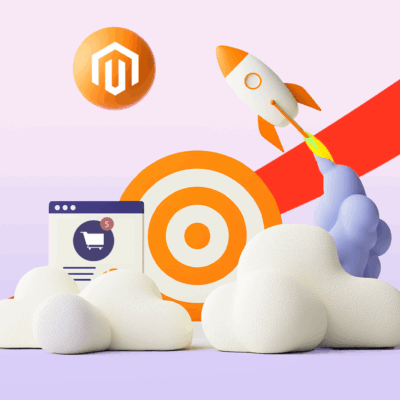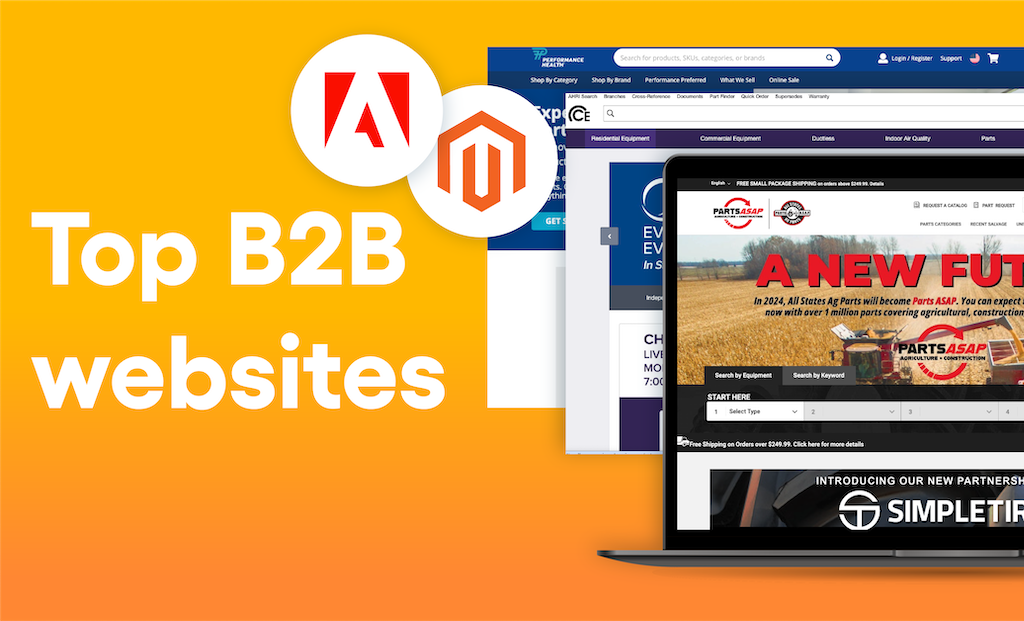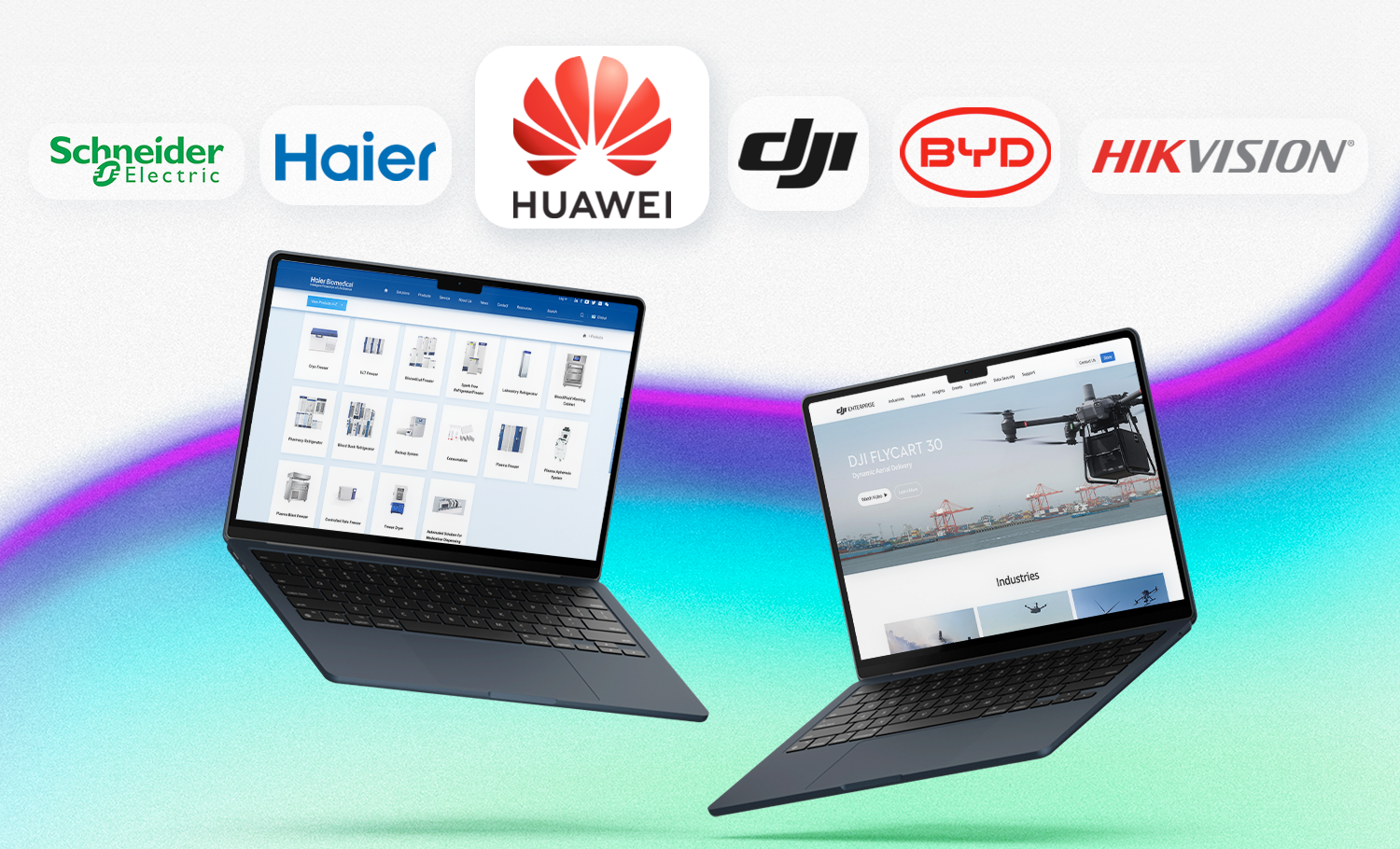Imagine a successful B2C eCommerce website: personalized content, articles and reviews, social subscriptions and creative promotions – all fine-tuned to gently but firmly guide a potential customer to making a purchase. Now think of a B2B eCommerce website (maybe you can even recognize your website): long spreadsheets of technical parameters; design and experience, optimized for a desktop user; call-to-actions along the lines of “call us and we’ll talk”.
Does it have to be this way, though? We would argue that implementing some (and even most) of the features that make B2C websites great for the user experience will be vastly beneficial for B2B websites too.
Your B2B customers are people too: after their B2B procurement workday is over, they don their another, a B2C customer hat – and visit B2C websites, use their exciting features, enjoy the comfort and satisfaction that B2C online shopping brings. No wonder, if they would want to bring some of that excitement into their work process, as a typical B2B eCommerce website is woefully inadequate for delivering similar experiences.
The user experience revolution of B2B procurement has started, and the stakes for B2B enterprises are quite high. The only question is – will you jump on this bandwagon or will you be left behind, watching your client pool trickling away to more customer-centric platforms and services. The old wisdom of “there are two kinds of companies: quick and dead” is now crystallizing into “there are two kinds of companies: customer-centered and dead”. In this article we’ll address exactly that: particular B2C features that would allow B2B business to become customer-centric.
Having said all this, it is important to acknowledge that B2B is still significantly different from B2C – and in most cases it is more complex too. While some B2C features should be a must-have across the board, some may only be applicable to certain types of B2B businesses. Let’s look at B2C features from that perspective – from universally beneficial, to those, where you have to show some discernment.
What’s Good for B2C Is Good for ALL B2Bs
Good news is, most of the basic B2C features that make online shopping such a great experience, will be a great addition to your B2B arsenal. Most of your customers are likely to have seen these features in their personal online shopping, so the transition to using them on the B2B side is going to be absolutely smooth.
Efficient search
Modern online shops tend to have everything a customer can possibly wish for – this ever increasing number of options is the main benefit of online shopping, something that was never possible in brick and mortar stores. However, it often can have a negative effect on purchasing behavior – something that psychologists noticed a while ago and dubbed “A paradox of Choice”. Presented with too many options, customers buy less, not more.
With B2B eCommerce this situation may be even worse – chances are your industry provides hundreds, if not thousands variations of the product. How to make sure this abundance does not scare customers away?
The best way about it is to provide a clear and obvious way to limit the seemingly endless list of options into manageable 3-4 items with clear distinctions between them. Here are a few suggestions:
Advanced search options
If your product has several parameters to choose from, have all these relevant variables in the search box, make sure customers can find exactly the specification they are looking for. To make it even more user friendly, update the number of search results immediately, without reloading the page.

Complex advanced search allows user to narrow down the search to exactly what they need
Simple / advanced search
Adding to the previous suggestion. Having too many options in the search box will be intimidating for users, who don’t know what those parameters are. Hide all the additional search parameters under the “advanced search” tab, to keep layman customers at ease.
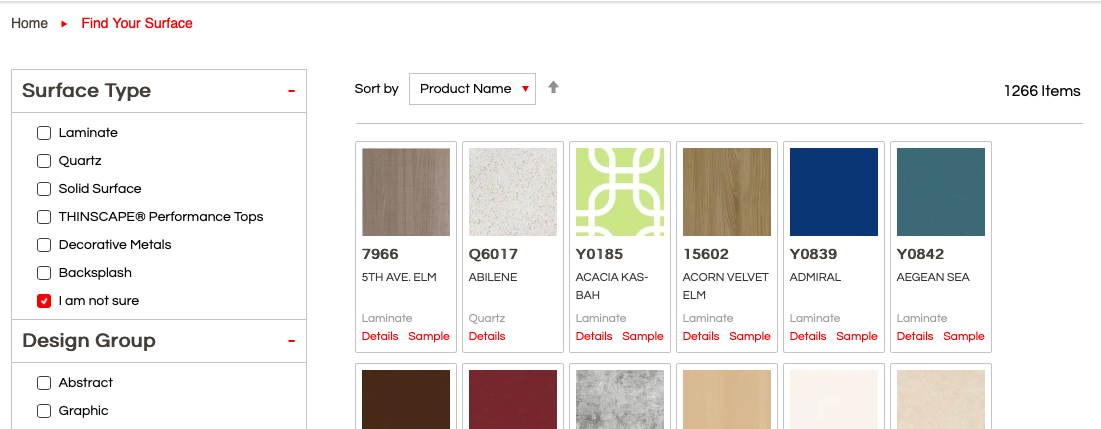
Note the “I am note sure” option that should comfort those who are not experts. Also, the results count in the top right corner.
Search suggestions / popular searches
Have a few options visible to illustrate what is being searched most often. Users should be able to click on those if the suggestion matches their interest.

Search suggestions point to the most popular requests with one click of a button
Easy-to-use navigation
There are a few things you can do that are not directly part of the search functionality of your website, but can greatly simplify navigation for a number of users.
Presets and recipes
Suggest solutions that proved to be the best options in particular situations - be it a particular situation the user is in, his level of expertise, size of the business – whatever makes sense for your eCommerce shop.

Scenarios to use product: solutions specific to customer’s situation
Dictionary / glossary
This option is a perfect addition if you have an “advanced search” tab. Often customers cannot say what they are looking for, but will make up their mind, as soon as you give a small hint at what is what. Add an explanation to the searching option – what this parameter is, what is a typical range that would satisfy most of the customers, which situation would require higher or lower values.
If the explanations are simple - you can add them as tooltips right next to the search fields. If they are more worldly – have a dedicated glossary page where you explain the terms used in the search.
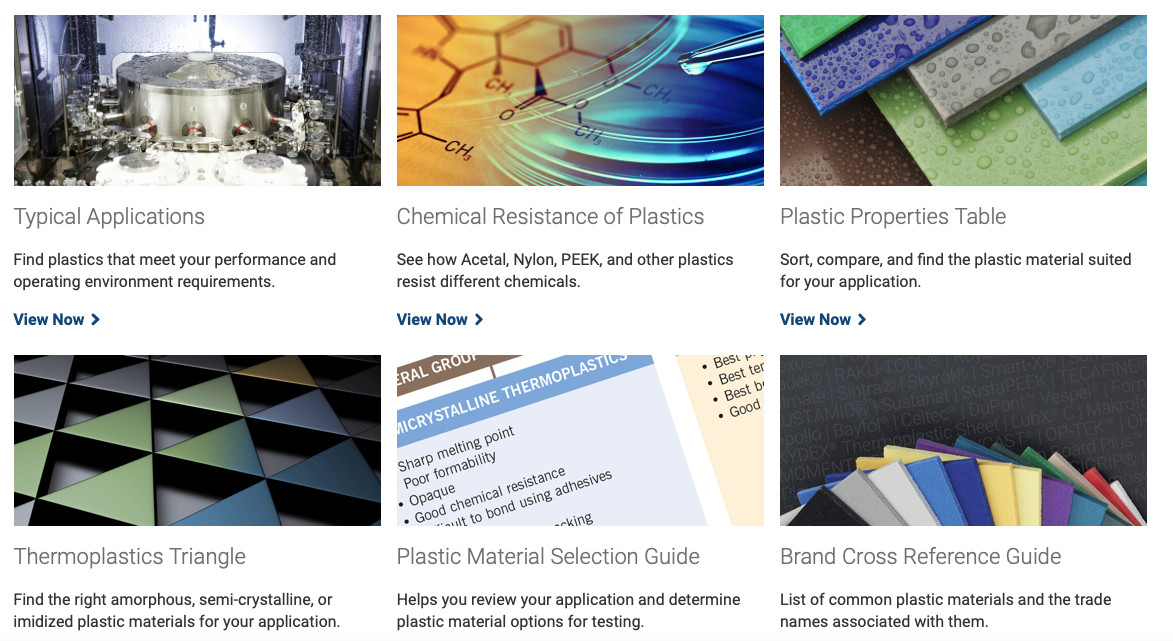
For complex product there could be several guides education customers on usage and selection process
User-centered catalog
When building your product catalog, try to approach it from the users’ perspective. Do not create groups, based on something that most users are not familiar with. Here’s a recent example from a Chinese TMall store: health supplements products used to be categorized based on the main pharmacological components of the method of production – which make little sense to ordinary buyers. Recently TMall restructured the whole catalog, putting a medical effect in the center: bone health, hearth health etc – something all of the customers can get along with.
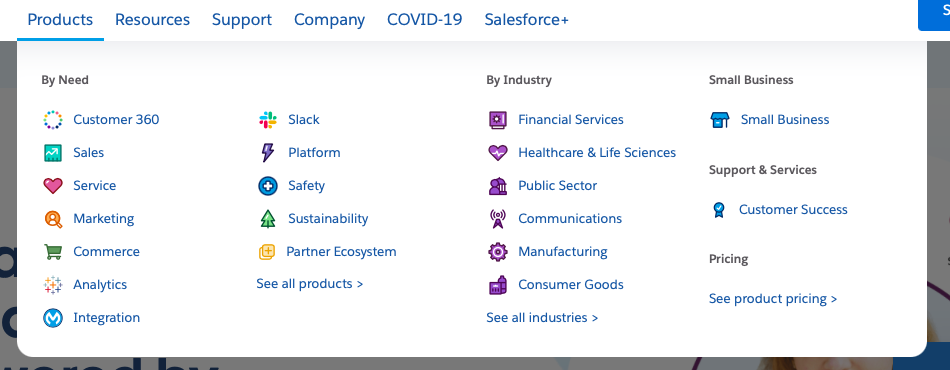
Navigation based on need / industry / business size of the user
Buying vs browsing
Here is a sneaky pitfall: over-optimizing your eCommerce website for conversion. True, some customers need just that: find the shortest way to the checkout button, place the order and get on with their lives. But there is a significant portion (more so in B2B), who need to get enough information first, spend some time researching your offer, and grow into trusting you. In terms of eCommerce – they need to have an opportunity for a meaningful browsing experience.
Your goal should be to provide them with such an opportunity. This is where pages about your company, team, mission and values, and your past successes come into play. This is the moment you have written all those articles in your blog for. You still can softly nudge the customer towards commitment, but tone down your hard sells, give the customer some space to nurture the trust.
Personalized content
This is where B2C marketplaces truly shine: personalized the content according to the interests you have shown on the platform. Recommended products, “People like you are often interested in”, wish-lists, custom bundles and offers – all made specially for you. This is what makes the B2C shopping experience so exciting. As long as you have enough information to work with , the same features can be successfully used for B2B, guiding customers to their next exciting purchase.
Seller analytics
Usually platforms do a great job providing users with their own analytics: purchase history, total volume, most popular purchases and so on. But when it comes to affecting customers behavior, seller’s analytics can have a much more profound impact. Display the number of customers that have chosen this or that product – it will be a great way to signal reliability to your customers (of course it only works if those numbers are something to write home about).

Displaying related products is a meaningful way to increase sales and to make sure customers haven't missed anything important in a complex purchase
Powerful content management functionality
B2B catalogs are notoriously expansive and complex. It is not uncommon to have thousands, if not tens of thousands of items in them. This is where the question of content management becomes particularly important.
Furthemore, the content in the B2B world goes so much further than just a pretty picture. Detailed specifications, downloadable manuals, certifications and accreditations – all these can be crucial for the final decision. It would be a shame if the eCommerce website cannot display such accurate up-to-date content.
To get on top of your digital assets, such modern tools as DAM (digital asset management) and PIM (product information management) will be of great help, automating most of the functionality.

Provide all necessary materials, don’t forget to have them available in the format, convenient to customers
What’s Good for B2C Is Good for SOME B2Bs
These features may not be applicable across all B2B eCommerce sites, but there are still a great many B2B companies that can benefit from implementing some of them.
Pricing and payment
The meat and potatoes of online shopping – pricing and payment can have as much effect on B2B as on B2C. Naturally, in a B2B situation the procurer uses company money, but at the same time the range of options a deal can take is much wider.
Dynamic pricing and other pricing strategies
Having AI to set the price to maximize the profit is a cutting edge of B2C eCommerce. Some B2B companies are beginning to explore these options, and the possibilities here are almost endless. The system can provide the starting price, based on multiple factors, such as order volume, delivery options, payment details – and, of course, previous relations with this account.
On top of that in B2B, price negotiation is much more common than in B2C – something that can and should be used in eCommerce. Online price negotiation form will provide extra opportunities for both buyer and sales person to find the deal that makes both parties happy.
Wide range of payment options
When it comes to payment, the more options you have available the more it is possible to satisfy the most particular custom requirements. Good news is, there are a huge number of solutions available on the market that would streamline the process both for you and for the buyer. That includes not only different ways to transfer funds (wire, online payment, various payment systems), but also such additional services, like financing the purchase, and issuing required paperwork.
Custom approval process
B2B companies usually have some sort of internal approval procedure in place – ranging from simple checks from the finance department to multi-tier multi-person processes for different purchase amounts. To accommodate such setups, B2B eCommerce can have custom account structures that allows for financial checks and confirmations to take place within the platform.
Mobile integration
What percentage of your customers are coming to your website from mobile devices? This is something that you should be able to see from your website analytics, and chances are it is way lower than for an average B2C business. There are researches that estimate that about 20% B2B visitors use mobile devices for making a purchase, and twice that – for the research. While it may seem not a lot, there are two things to remember: firstly, this number is constantly growing; secondly, this is an average number, the actual one for particular industries can be anywhere between 50% and 80%.
There are a few ways you can accommodate mobile traffic: responsive design or mobile version is the norm now, but in certain cases you would want to go beyond that.
If a significant portion of your orders comes (or can potentially come) from mobile traffic – your next step is to offer a mobile application for your customer. It’s an open question whether it should be a web app, a native app, or a miniprogram (if you are in China, miniprogram is most often the way to go) – but you can’t possibly do without one of these to fully optimize customer experience.
Simple re-purchase
This is something that B2C marketplaces are usually good at: simple, often literally one-button, re-purchase. It is one of the central features in food-delivery platforms, for obvious reasons.
It is certainly a must-have feature for a B2B eCommerce website, if you have any MRO in your catalog. MRO (stands for maintenance, repair and operations) are anything from printer cartridges and pencils to replaceable modules of industrial equipment. One of the defining features of MRO is that customers are likely to buy it regularly. If you sell MRO or anything else that can potentially be purchased several times – It only makes sense to make the repurchase process as smooth and easy as possible.
Customizable and configurable products
In certain B2B industries, the product that customers end up buying is a subject of heavy customization and configuration: there are modules to add or remove, parameters and options to choose from, additional features to mix and match.
Normally, this kind of customization is handled by the sales team – it can be one of the tools salespeople can use to sweeten the deal or sell more expensive items. In some situations, however, it makes sense to give the power of choice to the customer – let them be the architect of their own solution. Of course, that requires buyers to have a certain level of expertise, so it can be an advanced option for confident customers, with a fallback option in case they prefer the more traditional approach.
What’s Good for B2C Is Good for ONLY A FEW B2Bs
Finally, here is a list of suggestions that probably wouldn't be of much use to most B2B businesses. Still, no two industries, no two niches are identical — there is a chance you are in one of them that can benefit from these long shot ideas.
Social integration
In B2C, a successful social integration is a two-prong tool. From one side it adds social pressure to own something your friends or other people already have (FOMO is a powerful concept); another side is the trust you get from authentic reviews and appraisals, so called social proof.
Does the same approach work for B2B? Not everywhere, of course, but if you have a large number of customers, or if it is more about the service than about the technical characteristics of the product, social factors can be as powerful, as in B2C, if not more.
Multichannel commerce
Multichannel / O2O are trendy concepts in the world of B2C eCommerce – it allows sellers to synergize online and offline channels, providing customers with a more flexible and comfortable purchase experience. Be it “browse online, buy in brick and mortar” or “check out in a showroom, order online” – O2O is a concept that is here to stay.
Some B2B products definitely can benefit from this approach – for example for complex, innovative, mission-critical items that customers would like to see and assess in person.

Mentioning your customer review score is a simple way of providing social proof
Multiple storefronts
Multiple storefronts is a technical solution that allows you to run several stores (that appear totally independent from the outside), from a single backend – sharing certain admin functions, inventory management, settings etc. Multiple brands and specialized stores are the typical use cases on the B2C side.
Can it be of use for the B2B too? Typically no, but, for example, if your business comprises several branches that can potentially benefit from not diluting their catalogs – multiple storefronts is the way to go.
This is it for our list of suggestions of how B2C experience can be reused in the B2B world. Of course, each company is unique and perhaps there is a creative way of using some of the B2C tactics that we missed. Keep experimenting and push the boundaries even if only a little – you will definitely find something that will bring you ahead of the competition.
If you would like to look together for a creative solution for your B2B eCommerce in China, drop us a line through the “contact us” form and we’d be happy to start that conversation with you.

